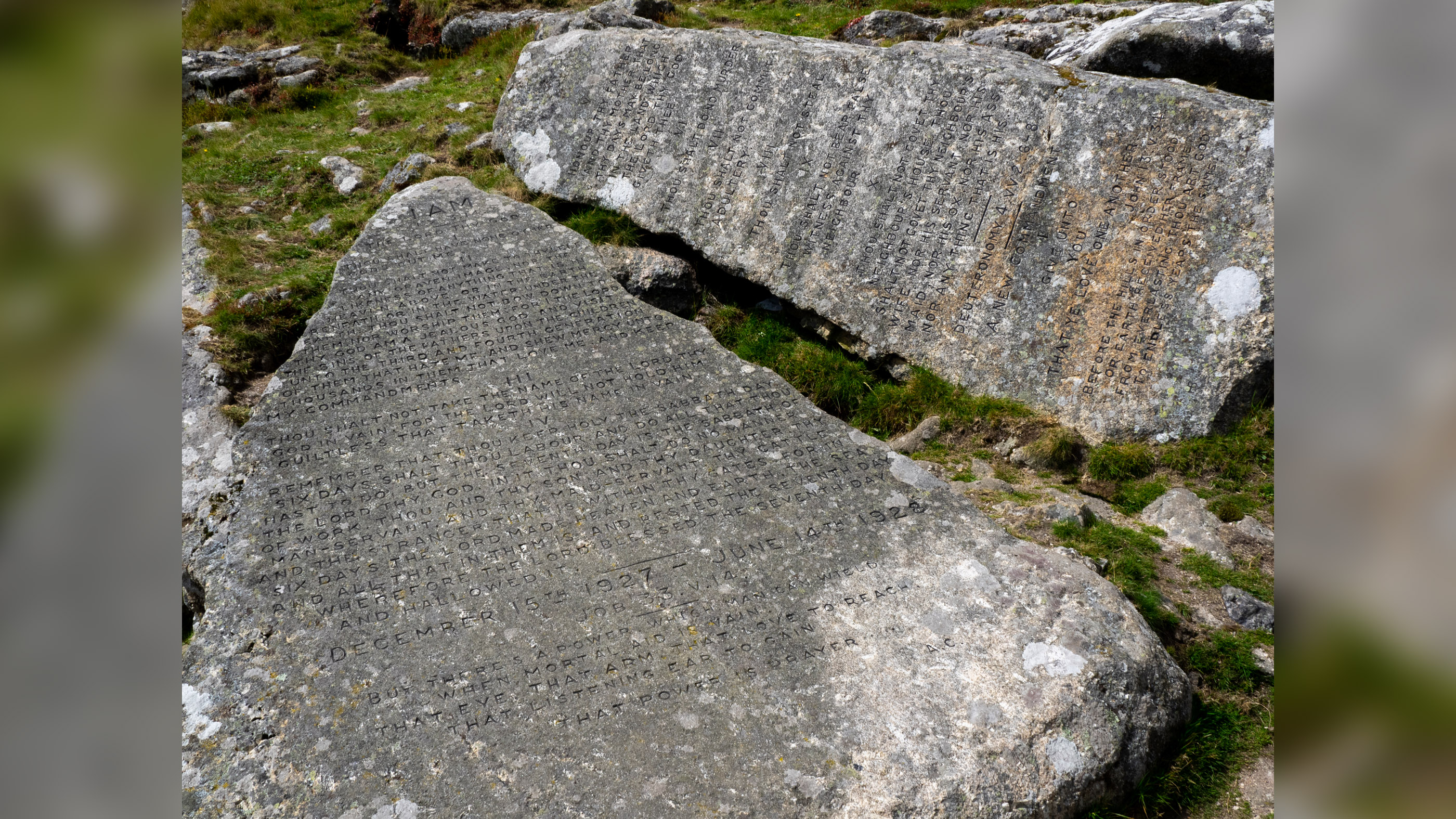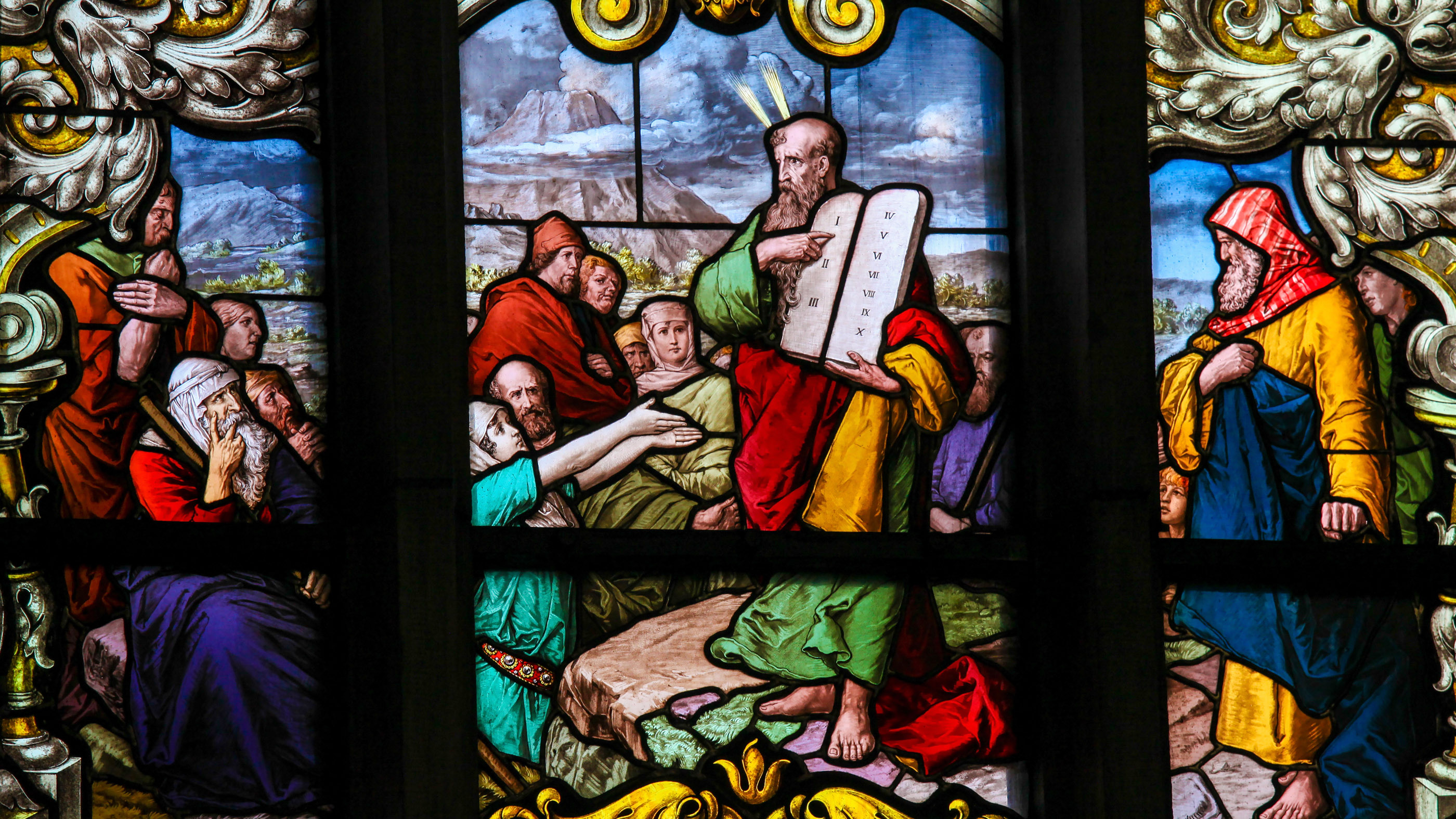Did a scholar really find an early copy of the Ten Commandments?
Outside experts are skeptical.

A biblical text dismissed as a forgery in the 19th century is not only authentic but is actually a predecessor to the Book of Deuteronomy, a scholar now says. Not everyone agrees.
The Book of Deuteronomy describes some of the events in Israel's early history and tells of several laws passed down by God, including the Ten Commandments. Many scholars believe that the Book of Deuteronomy was written around 2,700 years ago. This text would date back earlier.
The claim has generated a considerable amount of media attention, including a lengthy article in The New York Times; however, most scholars contacted by Live Science expressed doubts, saying they think the text is in fact a forgery.
Related: 7 biblical artifacts that will probably never be found
The text was written in paleo-Hebrew on 16 leather fragments. In 1883, Moses Wilhelm Shapira, an antiquities dealer based in Jerusalem, brought the text to Europe. He showed it to a committee of scholars in Germany, who dismissed it as a fake. Shapira then traveled to Britain where he offered to sell the fragments to the British Museum for 1 million pounds. An expert working for the museum also dismissed it as a forgery, declining the offer. The next year, in 1884, Shapira died by suicide in the Netherlands.
After Shapira's death, his widow sold the text to a bookseller named Bernard Quaritch, and its whereabouts has been lost since around the year 1900. But a number of handwritten copies of the text survive today.
Is the text real?
In a paper published in the March issue of the journal Zeitschrift für die Alttestamentliche Wissenschaft, and in a recently published book "The Valediction of Moses: A Proto-Biblical Book" (Mohr Siebeck, 2021), Idan Dershowitz, the chair of Hebrew Bible and its exegesis at the University of Potsdam, Germany, made the case for why the text is not only authentic but is a predecessor to the Book of Deuteronomy.
Sign up for the Live Science daily newsletter now
Get the world’s most fascinating discoveries delivered straight to your inbox.
The text, which Dershowitz calls the "The Valediction of Moses," tells a story in which God commands Moses to conquer the lands of a king named Sihon. "Moses and the Israelites then attack Sihon at [a place called] Jahaz, kill everyone, and capture all the king's cities. It is a short and straightforward narrative," Dershowitz wrote in his recent book. Despite being shorter than the Book of Deuteronomy, the text, he said, includes the Ten Commandments. Both texts also tell of the conquest of Sihon's lands, but the Book of Deuteronomy includes a lengthier description of the story.
Dershowitz says that this text, with its shorter narrative, was written before the Book of Deuteronomy. "Far from being derivative of Deuteronomy, this text is, in fact, Deuteronomy's ancient forebear," Dershowitz wrote in the journal article.
Dershowitz makes numerous arguments to support his contention that the text is authentic. For one, he said that Shapira's own notes show that the antiquities dealer was struggling to understand the text. At the very least, Dershowitz said, this should prove that Shapira didn't fake the document himself.

The papers have "a great number of question marks, marginal musings, and rejected readings; it appears to be a preliminary decipherment. Indeed, Shapira was still in the process of working out the correct order of the inscribed leather fragments," Dershowitz wrote in the journal article. "If Shapira was the forger — or one of the forgers — of the manuscripts, why do his private papers include a not-altogether-successful attempt at deciphering them? It would surely be unusual for a forger to labor to understand a text that he himself had devised or inscribed."
Second, Dershowitz argues that the story of how the text was discovered is remarkably similar to how the Dead Sea Scrolls were discovered in the 1940s.
"According to Shapira's testimony, it was in the summer of 1878 that he first heard about some ancient leather manuscript fragments that had been discovered by Bedouins in a cave near the Dead Sea, above Wadi al-Mujib," Dershowitz wrote. Shapira claimed to have purchased them from the Bedouin for a modest amount. This story of a text found by Bedouin in a cave near the Dead Sea is very similar to how the Dead Sea Scrolls were found in the 1940s, Dershowitz wrote. This similarity exists despite the fact that the Dead Sea Scrolls were not found until decades after Shapira's death.
Related: In photos: New Dead Sea Scrolls revealed
Dershowitz makes many more arguments to support his conclusions. For example, Dershowitz claims that a 19th-century forger likely would be unaware of some of the paleo-Hebrew words used in the text. He also notes that the Bedouin, whom Shapira claimed to purchase the text from, would have had little reason to create an elaborate forgery given that they were paid only a small amount of money.
What biblical scholars have to say

Live Science talked to more than half a dozen scholars not affiliated with the research to get their thoughts on the claims. Most of them expressed skepticism and said that the text is likely a forgery.
One problem the scholars noted is that the text has been lost for more than a century, making it impossible to carry out scientific tests on it. In addition, Shapira had a track record of selling forgeries, they noted. In the 1870s, Shapira sold several inscribed objects supposedly created by the ancient Moabites that turned out to be fake. The writing on the text, the scholars said, contains a number of unusual features that suggest a 19th-century forger created them, such as letters written in stances that an ancient writer would not normally write in.
Related: 6 archaeological forgeries that could have changed history
"Dramatic claims require dramatic, compelling evidence, and we just don't have it with regard to the Shapira strips. Rather, we have hypotheticals and circumstantial evidence, at best. And that's just not going to make the cut," said Christopher Rollston, a professor of Northwest Semitic languages and literatures at George Washington University, who gave a long list of reasons why the text is likely a forgery. "The script of the Shapira strips is flawed, and these flaws are similar to the sorts of flaws often found in modern forgeries through the decades," Rollston said.
Sidnie White Crawford, an emeritus professor at the University of Nebraska-Lincoln, who is an expert in the Hebrew Bible and Hebrew language, also found Dershowitz's arguments unconvincing. "The question of authenticity is based on the material remains — which are now missing and cannot be tested — and an analysis of the paleography — the handwriting," Crawford said, noting that previous paleographical studies of the text have found them to contain unusual features that indicate a forgery. Studies of the text conducted in the 20th and 21st centuries relied on handwritten copies, while some of the studies done in the 19th century used the actual text.
Dershowitz countered in his book and article that the paleographical errors scholars have identified may be the result of not having the actual text to study; 19th-century scholars could have introduced those errors when copying the text by hand. In other words, the actual text may have looked different to the handwritten copies that survive today.
Some scholars left open the possibility that the text is authentic. "Based on the few drawings that were made at the time, the fragments appear to be poorly executed forgeries, which would not be surprising, as Shapira had already been involved in a forgery affair a few years before," said Michael Langlois, a theology professor at the University of Strasbourg, France. "On the other hand, it is possible that the [copies] — not the fragments themselves — were poorly executed. Alas, we don't have the fragments themselves. Hence the dilemma. So, I would say that it is technically possible that the fragments were, in fact, genuine" Langlois told Live Science.
Originally published on Live Science.

Owen Jarus is a regular contributor to Live Science who writes about archaeology and humans' past. He has also written for The Independent (UK), The Canadian Press (CP) and The Associated Press (AP), among others. Owen has a bachelor of arts degree from the University of Toronto and a journalism degree from Ryerson University.









